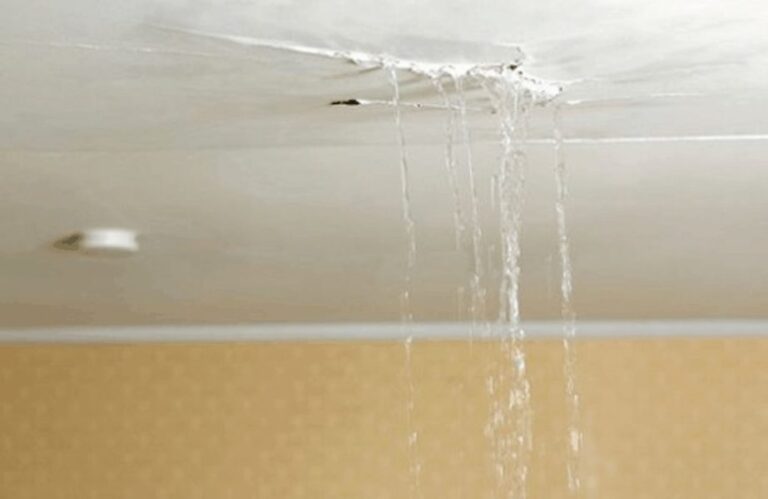The tank is overflowing or leaking
An overflowing attic water tank may be an issue that consumes little of your thoughts, but it’s a problem that can become extremely serious if left unchecked.
If your attic tank is constantly overflowing you should be able to see water around the outside of the tank.
The most common reason for a cold water tank to overflow is a faulty ball valve. Dirt, grit and limescale can build up and cause damage to the valve washer or general wear and tear can damage the valve itself. Washers and other components can be replaced, but in some situations it may be simpler to replace the whole valve.
If your attic water tank is leaking it could be from a variety of places. If you have a Leak Watch sensor installed under your attic water tank, it will notify you if it detects moisture. Otherwise, feel around the tank including the pipes leading in and out of the tank to try and identify where the leak is coming from.
Early intervention is vital, if a small leak turns into a bigger one water will flow downwards to your ceiling and cause serious damage to floors, ceilings and rooms below.
In some older properties, a metal tank may still be in place. As they age they are liable to rusting, corrosion and leaks. Once rusting has begun it’s usually only a matter of time before the tank bursts.
If possible, we recommend replacing a steel attic tank with a modern plastic water tank as soon as possible.
The tank isn’t filling
If your attic water tank isn’t filling up it won’t be able to feed the rest of your plumbing system.
There are many reasons why this can happen and often the root cause may be from somewhere else in the property rather than from the tank itself. In this scenario, it’s best to call on a plumber to investigate, find and fix the issue.
What’s the noise?
When water is flowing through your home, it’s not always silent. But there’s a difference between a plumbing system operating normally versus when there’s an issue. If the noise is noticeable or unusual, then there could be something wrong.
If air gets into your plumbing system you might hear noisy banging. If your tank is overflowing, you may hear trickles or splashing at unusual times or at night.
Common types of attic tanks:
Galvanised steel attic tank
If your home was built more than 40 years ago it’s likely the attic water tank fitted at that time was made of galvanised steel.
Although they were a great product at the time, over a period, rust and weak spots in the tank begin to develop. Many galvanised tanks have been changed over to plastic tanks that are more enduring.
If your attic tank is galvanised steel we strongly recommend changing over to a plastic one as soon as possible.
Plastic attic tank
Modern plastic attic water tanks are now the norm. They are lightweight and easy to handle.
Although they don’t rust like galvanised steel tanks, they still have potential points of failure. Where the feed pipes and the water exit pipes attach to the tank can be points of weakness.
Keep in mind that older galvanised metal water tanks amplify noise compared to their modern plastic counterparts. That said, if the sound is particularly loud you may need to check that your tank is properly supported. Attic water tanks should always be installed on a stand rather than directly onto ceiling joists. If you can hear loud vibrations, it could be a sign of a failing support structure.
Dirty Water
Your attic water tank feeds the majority of taps in your home, cold drinking water excluded. If dirt, grime or rust is accumulating in your tank, this can flow through to taps supplied by the tank.
Attic tanks are sometimes unsealed, the top remains open so water levels are viewable. This makes dirt and dust accumulation more likely. It also leaves the opportunity open for wildlife to access the tank.
Small amounts of dirt are not an immediate cause of concern, but its presence can indicate that the system is not working optimally. If dirt and limescale is allowed to continuously build up it can clog up pipes leading to major problems down the line.
Should I replace my attic water tank?
Attic tanks can wear out as they age, so it’s wise to keep an eye out for any early signs of failure. If your attic tank is giving you trouble or it’s an old metal model, it might be time to replace.
Modern plastic attic tanks are designed for the long haul. Nonetheless, pipework into and out of tanks can be areas of potential failure. If you want to be alerted to leaks early and prevent damage to your home join our pre-launch list and be the first to know when the Leak Watch Attic valve and tank sensor launches.


